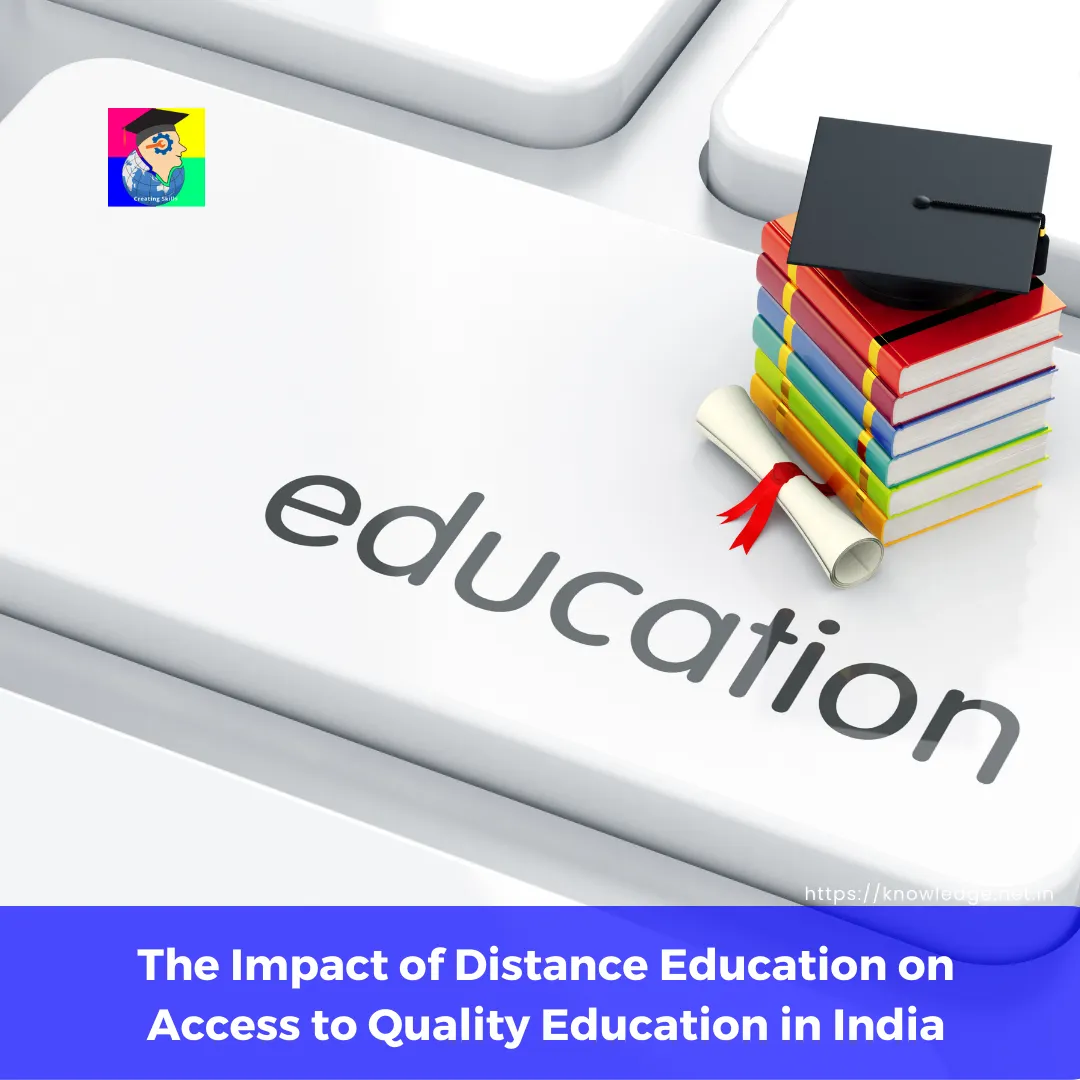The Impact of Distance Education on Access to Quality Education in India

Education is a fundamental right that empowers individuals and transforms societies. In India, a country with a vast and diverse population, ensuring access to quality education has long been a challenge. However, with the advent of distance education, barriers to education are being dismantled, opening up new opportunities for learners across the nation. This blog explores the transformative impact of distance education on access to quality education in India.
Understanding Distance Education:
Distance education, also known as remote learning or online education, is a method of teaching and learning that utilizes technology to bridge the gap between learners and educational institutions. It enables students to access educational resources, interact with instructors, and complete coursework remotely, often via the internet.
Breaking Geographical Barriers:
India's geographic diversity poses significant challenges to traditional education systems. Many remote rural areas lack adequate educational infrastructure and qualified teachers, making it difficult for students to access quality education. Distance education overcomes these barriers by leveraging technology. It allows students in even the most remote regions to connect with educational institutions, access digital learning materials, and receive instruction from qualified teachers
located elsewhere.
Expanding Educational Opportunities:
Distance education has expanded educational opportunities by making quality courses and programs accessible to a broader range of students. It has empowered individuals who were previously unable to pursue higher education due to financial constraints, personal commitments, or geographical limitations. With distance education, students can now enroll in a variety of degree programs, diplomas, and
certification courses without the need to relocate or give up their existing
responsibilities.
Flexibility and Convenience:
One of the significant advantages of distance education is its flexibility and convenience. Traditional education often requires students to adhere to rigid schedules and physical attendance. Distance education, on the other hand, allows students to learn at their own pace, design their study schedules, and access course materials whenever and wherever it is convenient for them. This flexibility is
particularly beneficial for working professionals, individuals with disabilities, and those with family obligations.
Enhancing the Learning Experience:
Distance education platforms have evolved significantly, offering interactive and engaging learning experiences. With multimedia resources, virtual classrooms, discussion forums, and real-time communication tools, students can actively participate in the learning process. These platforms foster collaboration, critical thinking, and problem-solving skills, enabling students to develop a deeper understanding of the subjects they study.
Digital Literacy and Technological Skills:
By embracing distance education, students naturally develop digital literacy and technological skills. In today's digital age, these skills are essential for career advancement and personal growth. Distance education equips learners with the necessary technical proficiency, ensuring they are well-prepared for the evolving demands of the job market.
Overcoming Socioeconomic Barriers:
Distance education has played a crucial role in breaking down socioeconomic barriers to education. With online courses and resources often available at lower costs than traditional institutions, students from economically disadvantaged backgrounds can access quality education without the burden of exorbitant fees. This has the potential to bridge the education gap and reduce disparities in educational opportunities across various social strata.
Challenges and the Way Forward:
While distance education has brought about significant improvements in access to quality education, certain challenges remain. Unequal access to technology and internet connectivity in remote areas is a significant hindrance. The digital divide must be addressed to ensure equitable access for all students. Additionally, maintaining the quality of online courses and programs, ensuring accreditation and
standardization, and providing adequate support systems for students are areas
that require continuous attention and improvement.
Distance education has emerged as a powerful tool in breaking barriers and expanding access to quality education in India. By leveraging technology and innovative learning platforms, it has opened doors of opportunity for students across the nation. The flexibility, convenience, and affordability of distance education have transformed the educational landscape, empowering individuals to pursue their academic aspirations, irrespective of their geographical location or socioeconomic background. As technology continues to advance, it is crucial to address the challenges and work towards bridging the digital divide to ensure that every learner can benefit from the transformative potential of distance education.
Discover how distance education is breaking barriers and transforming access to quality education in India. Share your thoughts in the comments below👇 and let's shape the future of learning together!
